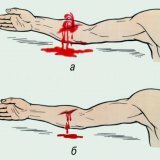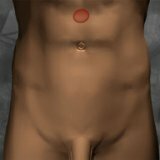Anesthesia during surgical procedures
 The human body is permeated with hundreds and thousands of nerve endings.They quietly "live" in their tissues, we do not notice their presence.But as soon as the nerve roots unceremoniously disturbs the mechanical stimulus - they very loudly declare themselves a momentary pain .Remember how it hurts, if you accidentally inflicted even a seemingly trifling cut or trite injected with a sharp object.
The human body is permeated with hundreds and thousands of nerve endings.They quietly "live" in their tissues, we do not notice their presence.But as soon as the nerve roots unceremoniously disturbs the mechanical stimulus - they very loudly declare themselves a momentary pain .Remember how it hurts, if you accidentally inflicted even a seemingly trifling cut or trite injected with a sharp object.
What can we say about surgical manipulations, from small outpatient interventions to hours of surgery in the hospital, when the hands of the surgeon, his scalpel, clamps, tweezers and the whole honest company of mechanical stimuli, tease the tissues and nerve endings in them? If the nervous branches of the body were disturbed for such a long time, a person would have died of a painful shock. Therefore, during the surgical manipulation to help surgeons comes anesthesia, or anesthesia.
Table of contents:What does the term "anesthesia" mean?
The elegant word "anesthesia" stands for "an-" - denotes negation, "-esthesia" - translated from ancient Greek as "sensitivity."That is, anesthesia is any method( or complex of methods) that leads to a temporary decrease or disappearance of tissue sensitivity.
Kinds of anesthesia
There are two large groups of anesthesia:
- local( when the sensitivity of individual tissues of the human body "turns off");
- general( when a person, figuratively speaking, is asleep and does not feel anything).
It should be noted that anesthesia is only general, such a thing as "local anesthesia" , there is no - nevertheless, this mistaken term is deeply rooted in patients' near-surgical conversations.You will conquer your surgeon if you ask: "Is the operation under local anesthesia or general?".
Each of these groups of anesthesia includes several options for anesthesia. Selection depends on:
-
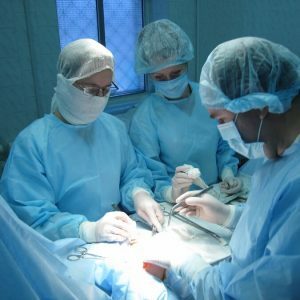 operation duration;
operation duration; - the degree of tissue trauma during surgery;
- concomitant diseases in the patient;
- contraindications to this or that method of anesthesia;
- general condition of the body;
- age.
Varieties of local anesthesia :
- surface;
- infiltration;
- conductor regional and central.
Variety of general anesthesia :
- inhalation anesthesia;
- intravenous anesthesia;
- endotracheal( or intubation) anesthesia.
Superficial anesthesia
 It is popular in dentistry, ophthalmology, otorhinolaryngology, outpatient( ie, in outpatient settings) surgery and traumatology.
It is popular in dentistry, ophthalmology, otorhinolaryngology, outpatient( ie, in outpatient settings) surgery and traumatology.
For the purpose of superficial anesthesia, the skin or mucous membranes are lubricated or sprinkled with preparations containing an ingredient that blocks impulses in the nerve roots and does not allow pain to develop during surgical manipulation.
For superficial analgesia, medicinal products such as:
- ointments are exchanged;
- gels;
- creams;
- sprays.
"Pros" : the concentration of anesthetics is small, so they almost never cause side effects.
"Cons" : this anesthetic can be performed as a non-prolonged surgical procedure on a limited area of the body.
Indications : it is used if it is necessary to perform any manipulations in tissues located superficially.
Contraindications : individual intolerance to anesthetic.
Infiltration anesthesia
Applicable in the case where the physician needs to go deeper into the tissues to perform a small amount of manipulation( operation):
-
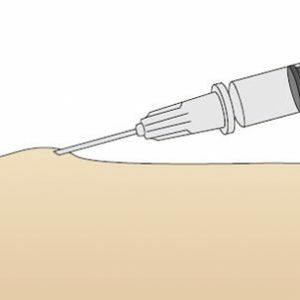 dissecting abscess( abscess);
dissecting abscess( abscess); - remove the foreign body;
- remove tumor of small size;
- perform a hernia repair
- and so on.
Earlier infiltration anesthesia was practiced by individual surgeons in some cavitary operations( for example, with appendectomy), but it was not popular in such cases, because , to put it mildly, did not give a full effect.
For infiltrative analgesia, anesthetic( novocain, lidocaine, trimecaine or others) is taken up in a syringe and injected into the tissue step by step, layer by layer.
The algorithm is as follows:
- the very first injection of an anesthetic is performed intradermally( do the so-called "lemon crust");The
- needle is pushed deeper and deeper, with an anesthetic gradually and evenly injected throughout the volume of tissues that will be involved in surgical manipulation or surgery( figuratively speaking, "impregnate" the tissues with an anesthetic, like a cake syrup).
Ideally performed infiltration anesthesia - one during which the patient felt only the first needle prick.
 "Pros" : anesthetics with infiltration anesthesia operate at the local level, without harming organs and organ systems.
"Pros" : anesthetics with infiltration anesthesia operate at the local level, without harming organs and organ systems.
"Disadvantages" : the inability to expand the surgical field if necessary without introducing an additional dose of anesthetic( for example, if there are sores of pus in the abscess that need to be carefully sanitized but which are outside the anesthetic zone).
Indications : simple and non-durable surgical manipulations and operations.
Contraindications : high patient pain threshold, extensive operation area, individual intolerance to anesthetics.
Conducting anesthesia
Often the volume of the operation is supposed to be such that it is necessary to "switch off" the sensitivity of a large array of tissues. Instead of doing a very long infiltration anesthesia and injecting a large amount of anesthetic into the tissue, the doctors came up with the idea of blocking a large nervous structure, on which the sensitivity in a particular part of the body depends. This automatically blocks the transmission of nerve( pain) pulses in a variety of nerve branches, twigs and small nerve endings that deviate from this large structure( nerve trunk, plexus, and so on).
Conducting anesthesia widely is used for surgical interventions in:
- traumatology;
- orthopedics;
- vascular surgery;
- of urology;
- of maxillofacial surgery;
- obstetrics and gynecology;
- abdominal surgery;
- purulent surgery;
- proctology.
Varieties of conductive regional anesthesia :
- stem - anesthetic injected into the area of a large nerve trunk;
- paravertebral - anesthetic drug is injected into the cavernous space;
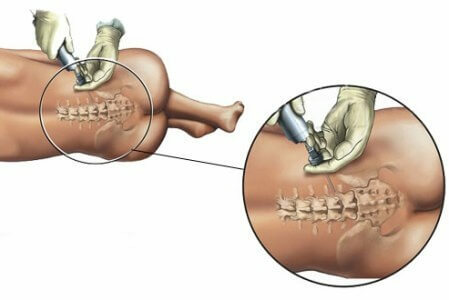
- anesthesia of the nerve plexuses - anesthetic splits large nerve plexuses( "tangles" of nervous branches).
types of central anesthesia
- spinal anesthetic is injected into the subarachnoid space where it is evenly distributed and blocks impulses in the spinal roots that( impulses) will no longer disturb the spinal cord;
- epidural - anesthetic is injected into the epidural space, while not piercing the dura mater( which is an undoubted "plus" of this type of conductive central anesthesia);
- caudal is a "child" version of epidural anesthesia at the lowest level of the spine - the level of the sacrum( "cauda" is translated from Latin as "tail").
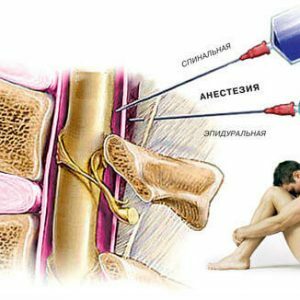 "Pros" : the patient can contact the surgeon, his partial motor activity remains, there is no systemic toxic poisoning with an anesthetic, because he is not injected into the bloodstream.
"Pros" : the patient can contact the surgeon, his partial motor activity remains, there is no systemic toxic poisoning with an anesthetic, because he is not injected into the bloodstream.
"Cons" : the possibility to injure large nerve structures with a needle.
Indications : the need to numb large areas of tissue, the inability to perform inhalation, intravenous or endotracheal anesthesia( for example, in the elderly, with severe diseases of the respiratory and cardiovascular systems).
Contraindications : inability to perform due to anatomical features( eg, deformity of the spine or scar tissue at the point of needle puncture).
Inhalation anesthesia
 It is in the competence of anesthesiologists.It is one of the most commonly used and anesthetized anesthetics types of anesthesia because it is simple to perform and acts for a short time( after small surgical interventions it is not necessary to wait long until the patient comes out of a medical dream).
It is in the competence of anesthesiologists.It is one of the most commonly used and anesthetized anesthetics types of anesthesia because it is simple to perform and acts for a short time( after small surgical interventions it is not necessary to wait long until the patient comes out of a medical dream).
The technique of inhalation anesthesia is quite simple.Through the mask in the respiratory system, drugs that cause drug-induced sleep are administered.He "disconnects" the patient from the outside world and his irritants - most importantly, from painful sensations due to the introduction of surgical instruments into the tissue.
Most often for the inhalation anesthesia is used drug, nitrous oxide, trilene, fluorotane, ethane.
"Pros" : relatively easy to manage yourself.
"Cons" : short duration - and this is not in the hands of the surgeon, he is forced to perform manipulation promptly so that the patient does not wake up before it ends.
Indications : simple and undurable manipulations, which, however, require that the patient is injected into medication sleep.
Contraindications : acute diseases from the respiratory system.
Intravenous anesthesia
The name speaks for itself - the patient is immersed in medication sleep after intravenous administration of drugs.Intravenous anesthesia is more complicated, because it requires calculation of the administered doses. But in comparison with inhalation anesthesia its "plus" is unambiguous in that it acts more long and deeply - figuratively speaking, the patient sleeps more tightly.
It is used for simple, non-prolonged and uncomplicated surgery in the hospital( appendectomy, suturing of extensive wounds, sometimes - hernia repair, etc., and also for surgical interventions in children).Applicable in outpatient surgery, if the patient refuses hospitalization to the hospital, and surgical intervention can be carried out in the operating room or dressing clinic, but it can be delayed or fraught with a pain syndrome.First and foremost, we are talking about the opening of huge abscesses, which require thorough sanitation( purification from pus), painful manipulations in the perineum and rectum and so on.
In classical anesthesia, thiopental, rekofol, sodium oxybutyrate is used, with ataralgesia( surface anesthesia) - sibazone with fentatil.
"Pros" : immerses in a medical dream of sufficient depth.
"Cons" : does not provide muscle relaxation in extensive and lengthy surgical operations.
Indications : stationary surgical interventions of an average level of complexity.
Contraindications : diseases from the CCC( cardiovascular system), certain diseases of the respiratory system( for example, bronchial asthma), severe disorders of the central nervous system and the psyche.
Endotracheal( intubation) anesthesia
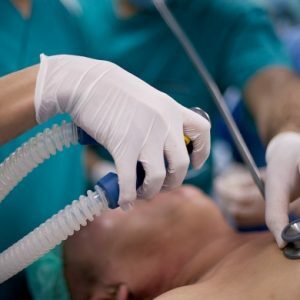 This is the most complex of all without anesthetic methods.At the same time - the most effective.During his time, the patient not only goes deep into sleep - musculature relaxes with the help of special preparations, which is very important for the convenience of many surgeons performing the elements of the operation.
This is the most complex of all without anesthetic methods.At the same time - the most effective.During his time, the patient not only goes deep into sleep - musculature relaxes with the help of special preparations, which is very important for the convenience of many surgeons performing the elements of the operation.
Muscle relaxants, which relax the muscles, including the "disconnect" the diaphragm and intercostal muscles - the patient can not breathe on his own, so it is connected to the external respiration device with the help of an endotracheal tube.Hence the name of this method of anesthesia.
The stages of endotracheal anesthesia are as follows:
- intravenous administration of drugs that immerse the patient in drug-induced sleep;
- the introduction of muscle relaxants, "disconnecting" the muscles;
- intubation of the trachea( introduction to the trachea of the laryngoscope, and with its help - an endotracheal tube);
- artificial respiration and maintenance of the state of medical sleep.
"Pros" : provides complete immobilization of the patient, which means an absolute freedom of the surgeons, who during the operation do not need to overcome the tension of the patient's muscles.
"Cons" : complicated in implementation, involves the introduction of a whole mix of medications( in particular, narcotic and muscle relaxants), which can later be reflected on the activities of the central nervous system.
Indications : long complex cavitary operations for diseases of the biliary system, stomach, intestines, retroperitoneal space and chest, peritonitis and so on.
Contraindications : respiratory and cardiovascular disease, elderly.
About the ideal method of anesthesia
It is not.Each method of anesthesia is appropriate under certain conditions.When choosing the method of anesthesia, it is necessary to take into account the forthcoming surgical manipulation( in particular, its volume and duration), to carefully analyze the clinical situation, the patient's condition, the presence of concomitant diseases, indications and contraindications to the implementation of this or that method of anesthesia.
Kovtonyuk Oksana Vladimirovna, medical reviewer, surgeon, consulting physician


